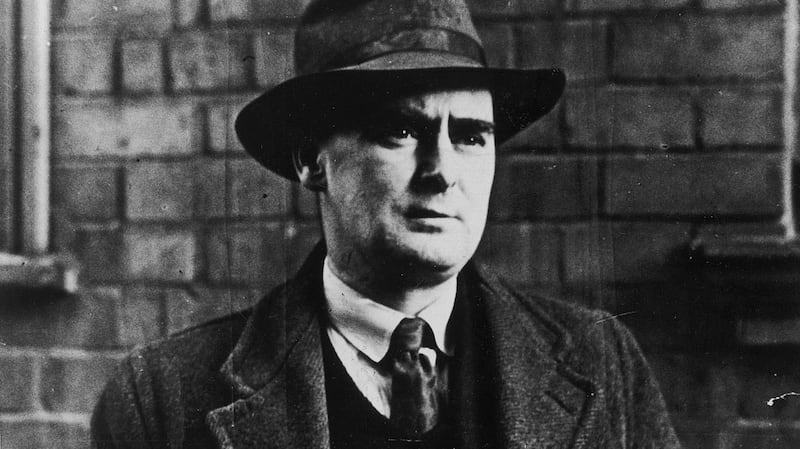In March of this year, about 725,000 people in Ireland and more than 11 million in the UK tuned in to see Meghan Markle and Britain’s Prince Harry explain their decision to leave royal life.
However, 85 years ago this month, the last time a British royal’s relationship with an American threatened the stability of the monarchy, the people of Carlow and its surrounding areas were the first to hear about king Edward VIII’s sensational relationship with Wallis Simpson.
Until Saturday, November 21st, 1936, a strict media blackout in print and radio had been in place about the king’s intentions. British papers obliged and a blanket news blackout held on this side of the Atlantic. That was until Liam Bergin, a reporter with The Nationalist and Leinster Times, published a leader detailing the romance and the constitutional crisis it entailed. The British establishment was refusing to let the king marry a divorced woman while simultaneously pushing forward a Bill to make divorce easier.
The leader noted that to the eyes of the world the king is vested in “a dubious glamour” by the progress of a somewhat inclandestine romance.
“The Simpson Business” (as the writer calls it) “is causing the bigwigs of British State and Church no little concern”.
A lively piece of writing, it’s tucked away on page four, in between an advertisement for a Greta Garbo film at the Palace Cinema in Bagenalstown and news of a dance to be held at Stradbally boxing club.
It says Edward’s romance is not a new one and that his late father, George V, had been engineering trips for his son on various foreign tours so as to keep him out of “plebeian mischief; away from the contact of his favourite lady”.
Taking aim at the censorship of this British blackout, the paper proclaims: “The News Lords of London have called off their sleuths from smelling out Royal scandal” while saying that Edward does not appear to mind the publicity given to the affair in the American press.
Ten days after Bergin's leader was published in the Carlow Nationalist, the Bishop of Bradford, Alfred Blunt, denounced Edward from the pulpit
It also commented that when Edward was prince of Wales nothing was written about the affair as “it was considered such fun would end with his accession”, but now as king, he is flouting public opinion and causing trouble for prime minister Stanley Baldwin. The Lloyds insurance firm, it tells us, had taken out odds against the coronation taking place.
“It all sounded so hypocritical,” Liam Bergin said when asked about it later. “I wrote a leader about it on the principle that they were allowing divorce but would not allow Mrs Simpson to marry the king”.

On the subject of him breaking the media blackout he said: “The phones began to ring and I got abuse from all sorts of people still loyal to the empire. I had never expected that at all.”
Ten days after Bergin’s leader was published in the Carlow Nationalist, the Bishop of Bradford, Alfred Blunt, denounced Edward from the pulpit, giving some in the British press the opening they needed to report the story.
And nine days after that, Edward went on BBC radio to say he couldn’t do his job without the support of “the woman I love” and abdicated.
Among the national journalists to start out under his tutelage were Desmond Fisher, James Downey, Olivia O'Leary and Joe O'Brien
The Instrument of Abdication was given legal effect the following day, when Edward gave royal assent to the British government’s Declaration of Abdication Act.
However, as the Irish Free State passed its own external relations Act on December 12th – restricting the king’s role to diplomatic and foreign affairs and recognising Edward’s abdication and the accession of his brother as George VI – it meant he was king in Ireland a day longer than he was king of England. His tenure as king lasted a total of 325 days. Bergin’s as editor of the Carlow Nationalist was considerably longer.
He became both managing director and editor in 1944, positions he held until 1985.
A transformative editor, he grew the newspaper from one with 14 employees to one with over 40 by the mid-1980s. He experimented with new typefaces and improved page layout, replaced older machines with newer ones and pioneered new production processes.
Among the national journalists to start out under his tutelage were Desmond Fisher, James Downey, Olivia O’Leary and Joe O’Brien.
He employed Brian O’Nolan, better known as Myles Na gCopaleen or Flann O’Brien, to write for the paper under the pen name of George Knowall. Bergin was also a visiting professor at Southern Illinois University, where he was instrumental in acquiring the original manuscripts of the writings of Myles na gCopaleen for that university.










